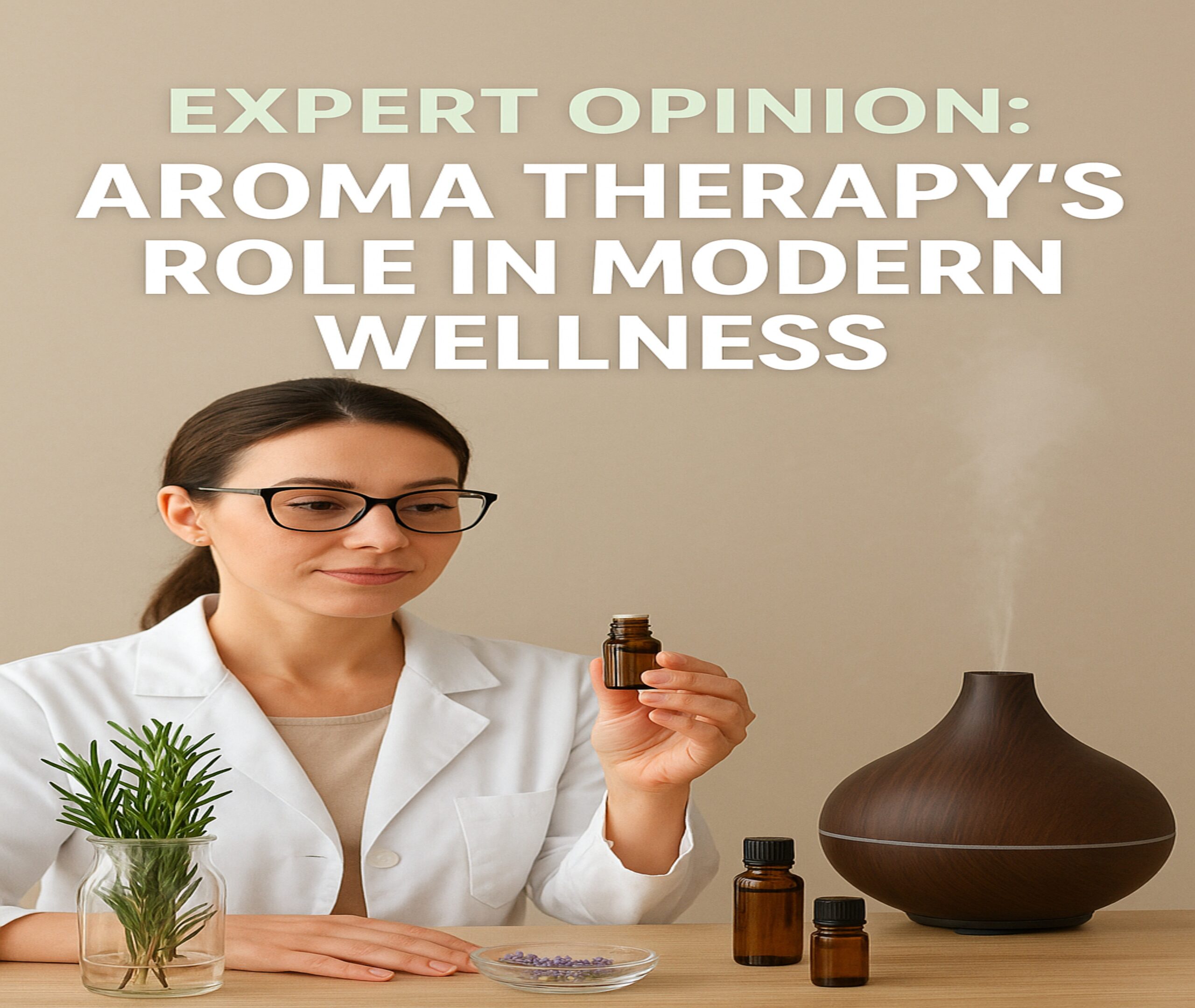Introduction: The Scented Science Behind Modern Wellness
In a world increasingly leaning toward holistic health solutions, aromatherapy has emerged as one of the most influential wellness trends of 2025. Once confined to spas and meditation rooms, essential oils and aromatic blends are now being embraced by wellness professionals, doctors, and psychologists alike. But what exactly makes aroma therapy so powerful in today’s health-conscious culture?
Aroma therapy, or essential oil therapy, uses plant extracts to promote physical and emotional well-being. Experts describe it as a “mind-body bridge” — a practice where olfactory stimulation triggers biochemical responses in the brain. Modern research published in Frontiers in Behavioral Neuroscience (2024) confirms that inhaling certain essential oils like lavender, chamomile, or bergamot can reduce cortisol levels by nearly 25%, supporting emotional balance and relaxation.
Let’s hear what experts have to say about aromatherapy’s evolving role in modern wellness practices and how it blends ancient tradition with 21st-century science.
Expert Perspectives: How Aroma Therapy Supports the Mind and Body
According to Dr. Nisha Arora, an Ayurvedic and holistic medicine specialist at the Indian Institute of Wellness, aromatherapy represents the “return of sensory healing” — an ancient art revalidated by neuroscience. She notes that “essential oils like rosemary enhance cognitive clarity by increasing acetylcholine levels, while lavender promotes parasympathetic nervous system activation, inducing calm.”
From a clinical psychology perspective, researchers at King’s College London (2025) report that aroma therapy is being incorporated into cognitive behavioral therapy (CBT) sessions to help patients regulate anxiety. A controlled trial showed that diffusing ylang-ylang essential oil during therapy reduced participants’ heart rates and improved focus.
Meanwhile, in the corporate wellness space, scent-based interventions are being introduced to combat burnout. A 2025 survey by Global Wellness Institute found that 62% of companies have introduced aroma diffusers or essential oil relaxation corners in workplaces — a testament to aromatherapy’s newfound legitimacy in productivity and stress management.
Aromatherapy Techniques Experts Recommend
- Diffusion Therapy:
Use ultrasonic diffusers to disperse calming essential oils like lavender, sandalwood, or clary sage to create a serene environment at home or work. - Topical Application:
Mix diluted essential oils with carrier oils (like jojoba or coconut oil) for massages that relax muscles and improve circulation. - Steam Inhalation:
Add eucalyptus or peppermint oils to hot water to relieve sinus pressure and enhance respiratory health — a technique recommended by holistic practitioners during seasonal transitions. - Scented Meditation:
Combine aromatherapy with mindfulness meditation for a synergistic effect — sandalwood or frankincense deepens focus and spiritual grounding.
Aroma Therapy in Integrative Medicine: The Expert View
Dr. Marcus Levin, a wellness researcher at the European Institute of Aromatic Studies, explains that aroma therapy’s efficacy lies in its interaction with the limbic system — the brain’s emotion center. When inhaled, aromatic molecules bind to receptors in the nasal cavity, sending instant signals to brain regions that regulate emotion, heart rate, and memory.
Moreover, integrative health clinics in 2025 are blending aroma therapy with acupuncture, yoga, and physiotherapy to provide comprehensive healing experiences. Hospitals like the Mayo Clinic and AIIMS Delhi have begun using lavender and citrus diffusers in recovery rooms to ease patient anxiety and improve sleep quality.
Challenges and Future Directions in Aroma Therapy
Despite its growing popularity, experts caution that aroma therapy is not a cure-all. Quality control remains a major issue — synthetic or adulterated oils can cause allergies or lose therapeutic potency. The World Aromatherapy Council (2025) is now developing global purity certification standards to ensure consistent product quality.
Additionally, Dr. Arora warns against excessive self-medication: “Essential oils are potent plant compounds. Without guidance, overuse can irritate the skin or interfere with medications.” Hence, expert consultation is vital for safe, effective use.
As the industry moves forward, experts predict that AI-driven personalization will soon revolutionize aromatherapy — using biometric sensors to recommend scents that match one’s emotional or physiological state.
Conclusion: Aromatherapy as the Future of Holistic Wellness
The rise of aromatherapy in modern wellness isn’t a passing fad — it’s a reflection of a larger movement toward mindful, sensory-based healing. With scientific validation and expert advocacy, essential oils have transcended the realm of luxury and entered mainstream wellness culture.
As we step further into 2025, aromatherapy stands at the intersection of tradition and innovation — merging ancient plant wisdom with cutting-edge neuroscience to nurture a calmer, more balanced world.
FAQs
What is aromatherapy and how does it work?
Aromatherapy uses natural essential oils to improve physical, emotional, and psychological well-being by stimulating the brain’s limbic system, which controls emotions and stress response.
Which essential oils are best for relaxation?
Lavender, chamomile, ylang-ylang, and sandalwood are the most recommended oils for relaxation and sleep enhancement.
Can aromatherapy replace medical treatment?
No, aromatherapy complements but does not replace conventional medicine. Always consult a healthcare provider before using it as a treatment adjunct.
Is aromatherapy scientifically proven?
Yes. Studies in 2024–2025 show significant stress reduction and mood enhancement in individuals exposed to specific essential oils under controlled conditions.
How can I safely practice aromatherapy at home?
Use high-quality essential oils, dilute them properly, avoid direct skin contact without carrier oils, and ensure proper ventilation when diffusing scents.

